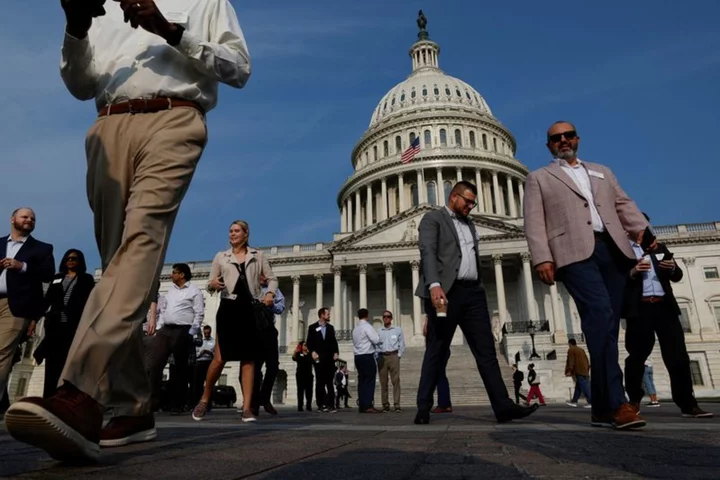By Pete Schroeder
WASHINGTON As the United States stares at the risk of a credit downgrade, former Standard & Poor's officials stood firm behind their seminal 2011 call to slash the country's rating as the right decision.
That downgrade came days after Washington narrowly averted a default, but S&P went ahead, cutting the U.S. pristine "AAA" to "AA-plus," citing heightened political polarization and insufficient steps to right the nation's fiscal outlook.
"We thought that the political polarization in the country was likely to endure, and secondly, we were also concerned about the rising trajectory of debt," said David Beers, the former head of sovereign ratings for S&P. "On both of our counts, our expectations, if anything...have been exceeded. I have no doubt in my mind that was the right call."
The downgrade was unprecedented and met with fierce criticism from the then-Obama administration and some congressional leaders, who challenged S&P's methods and analysis.
S&P had actually placed the U.S. government on a negative outlook four months before the downgrade. And S&P notified the U.S. government of its downgrade decision roughly 24 hours in advance of a formal announcement, according to John Chambers, who headed S&P's sovereign rating committee.
"It was probably, professionally, the most important decision I've made in my life," said Chambers. "When you lower the rating of a government, they're always very upset. ... We think we've been vindicated with the passage of time."
S&P still maintains the downgraded U.S. rating, with a stable outlook. An S&P spokesperson declined to comment further.
NEW DECADE, SAME ISSUES
As the U.S. again teeters on a debt-ceiling crisis, credit agencies are again assessing the U.S.'s creditworthiness. They are weighing repeated political fights over the nation's borrowing capacity and a weaker fiscal picture weighing on the nation's creditworthiness.
Wednesday's threat by Fitch Ratings that it could downgrade the U.S. credit rating has spiked concerns the nation could see borrowing costs rise and its standing as the backbone of the global financial system weakened.
The move also placed a spotlight on Fitch, which is smaller than the other major rating agencies, Standard & Poor's and Moody's Investors Service.
“Rating agencies are for-profit, private companies," said Steven Schwarcz, a professor at Duke Law School. "Their main stock and trade is reputation. ... A credit downgrade watch doesn’t mean there’s a downgrade, but it gets Fitch right out there in the news and that could increase its reputation."
A Fitch spokesperson did not respond to a request for comment on the motivation behind the decision.
The agency said while it expects policymakers to reach a deal, there are "elevated" risks given the shrinking amount of time. Treasury Secretary Janet Yellen has said the U.S. government could run out of funds as soon as June 1.
The move leaves Moody's as the lone major credit rating agency to not take formal steps to reassess the nation's credit reputation. An agency spokesperson said Thursday that Moody's still has the nation rated "AAA" with a stable outlook -- its highest possible rating.
But Moody's is leaving the door open to a similar move to Fitch, telling Reuters a change in tone among Washington negotiators could spur such a warning.
"I suspect none of them want to look foolish or overconfident if matters do sour. Thus a credit watch rating is a nice compromise," said John Coffee, a professor at Columbia Law School.
Moody's did not comment about the reason it has not yet moved.
Experts said for credit raters, evaluating the U.S. presents a challenge because the concerns are primarily about the political ability to strike compromise and raise the legally-mandated borrowing cap, as opposed to actually raising funds to pay off debtors once permitted.
"It's kind of symbolic rather than probability of loss because it should be much, much lower if there was a significant probability of loss," said Edward Altman, a finance professor emeritus at New York University's Stern School of Business.
(Reporting by Pete Schroeder; editing by Megan Davies and Leslie Adler)

